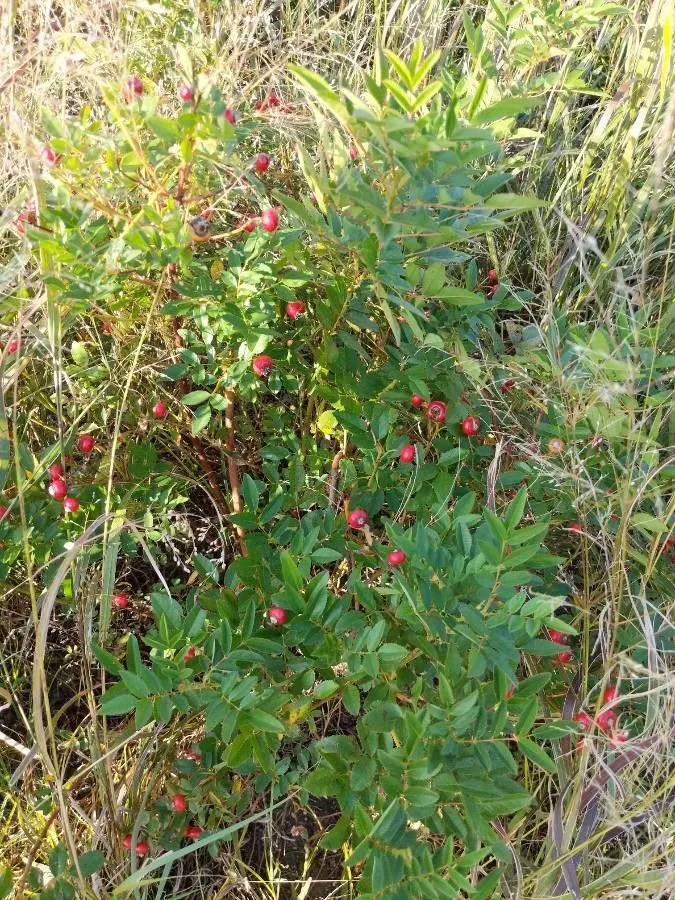
Author: Marshall
Bibliography: Arbust. Amer.: 135 (1785)
Year: 1785
Status: accepted
Rank: species
Genus: Rosa
Vegetable: False
Observations: E. Canada to NC. & E. U.S.A.
The Swamp Rose, scientifically known as Rosa palustris, is a flowering plant that belongs to the Rosaceae family. First described by Marshall in the bibliographical work “Arbust. Amer.” in 1785, this plant has captivated botanists and nature enthusiasts alike for centuries.
Native to regions ranging from Eastern Canada down to North Carolina, and extending further into the Eastern United States, the Swamp Rose thrives in wet, swampy environments. This hardy species is perfectly adapted to the moist, nutrient-rich conditions of its habitat.
Swamp Roses are characterized by their beautiful, fragrant blooms which typically exhibit a delicate pink hue. These flowers usually emerge in late spring and continue to bloom throughout the summer, offering a spectacular display of color and attracting a variety of pollinators, including bees and butterflies.
The plant itself can grow as a shrub, reaching heights of up to 6-8 feet. Its branches are adorned with spiny thorns, a common trait among rose species, and its leaves are pinnately compound, consisting of several smaller leaflets that provide a lush green backdrop for the vibrant flowers.
In addition to its ornamental value, Rosa palustris also plays a significant ecological role. The dense thickets formed by this plant provide essential shelter and breeding grounds for various wildlife species. Furthermore, the rose hips that develop after the flowers fade offer a nutritious food source for birds and small mammals during the colder months.
Cultivating the Swamp Rose in garden settings can replicate parts of its native habitat. Gardeners often plant it in areas with ample moisture, such as near ponds or along the edges of streams. The plant’s resilience and minimal maintenance requirements make it a popular choice for naturalistic landscaping and restoration projects aimed at sustaining local biodiversity.
In conclusion, the Swamp Rose is not only a strikingly beautiful plant but also a vital component of its natural ecosystem. Its historical documentation by Marshall underscores its longstanding significance, encouraging continued appreciation and conservation efforts for this remarkable species.
Deu: sumpf-rose
Eng: swamp rose, marsh rose
Swe: sumpros
Fra: rosier palustre, églantier
En: Swamp rose, Marsh rose
Fr: Rosier palustre, Églantier
De: Sumpf-Rose
Sv: Sumpros
© copyright of the Board of Trustees of the Royal Botanic Gardens, Kew.
© copyright of the Board of Trustees of the Royal Botanic Gardens, Kew.
© copyright of the Board of Trustees of the Royal Botanic Gardens, Kew.
Taken Oct 31, 2021 by Denis Fedosov (cc-by-sa)
Taken Oct 16, 2022 by Grand Empire Of Ohio (cc-by-sa)
Taken Nov 13, 2022 by stephen wright (cc-by-sa)
Taken Nov 10, 2022 by Dan Bossé (cc-by-sa)
Taken Nov 7, 2022 by Terri McCallum (cc-by-sa)
Taken May 26, 2021 by Richard Wilkens (cc-by-sa)
Taken Aug 15, 2021 by Amélie Lampron (cc-by-sa)
Taken Aug 15, 2021 by Amélie Lampron (cc-by-sa)
Taken Oct 31, 2021 by Denis Fedosov (cc-by-sa)
Taken Oct 16, 2022 by Grand Empire Of Ohio (cc-by-sa)
Taken Oct 3, 2020 by Matthias Foellmer (cc-by-sa)
Taken Oct 3, 2020 by Matthias Foellmer (cc-by-sa)
Taken Aug 15, 2021 by Amélie Lampron (cc-by-sa)
Taken May 23, 2022 by brunhildethebonny (cc-by-sa)
Taken Jul 5, 2020 by stan sperlak (cc-by-sa)
Growth form>: Rhizomatous
Growth habit>: Subshrub
Growth rate>: Moderate
Ph maximum: 7.0
Ph minimum: 4.0
Family: Myrtaceae Author: (F.Muell.) K.D.Hill & L.A.S.Johnson Bibliography: Telopea 6: 402 (1995) Year: 1995 Status:…
Family: Rubiaceae Author: Pierre ex A.Froehner Bibliography: Notizbl. Bot. Gart. Berlin-Dahlem 1: 237 (1897) Year:…
Family: Sapindaceae Author: Koidz. Bibliography: J. Coll. Sci. Imp. Univ. Tokyo 32(1): 38 (1911) Year:…
Family: Asteraceae Author: A.Gray Bibliography: Pacif. Railr. Rep.: 107 (1857) Year: 1857 Status: accepted Rank:…
Family: Fabaceae Author: Medik. Bibliography: Vorles. Churpfälz. Phys.-Ökon. Ges. 2: 398 (1787) Year: 1787 Status:…
Family: Aspleniaceae Author: (Cav.) Alston Bibliography: Bull. Misc. Inform. Kew 1932: 309 (1932) Year: 1932…